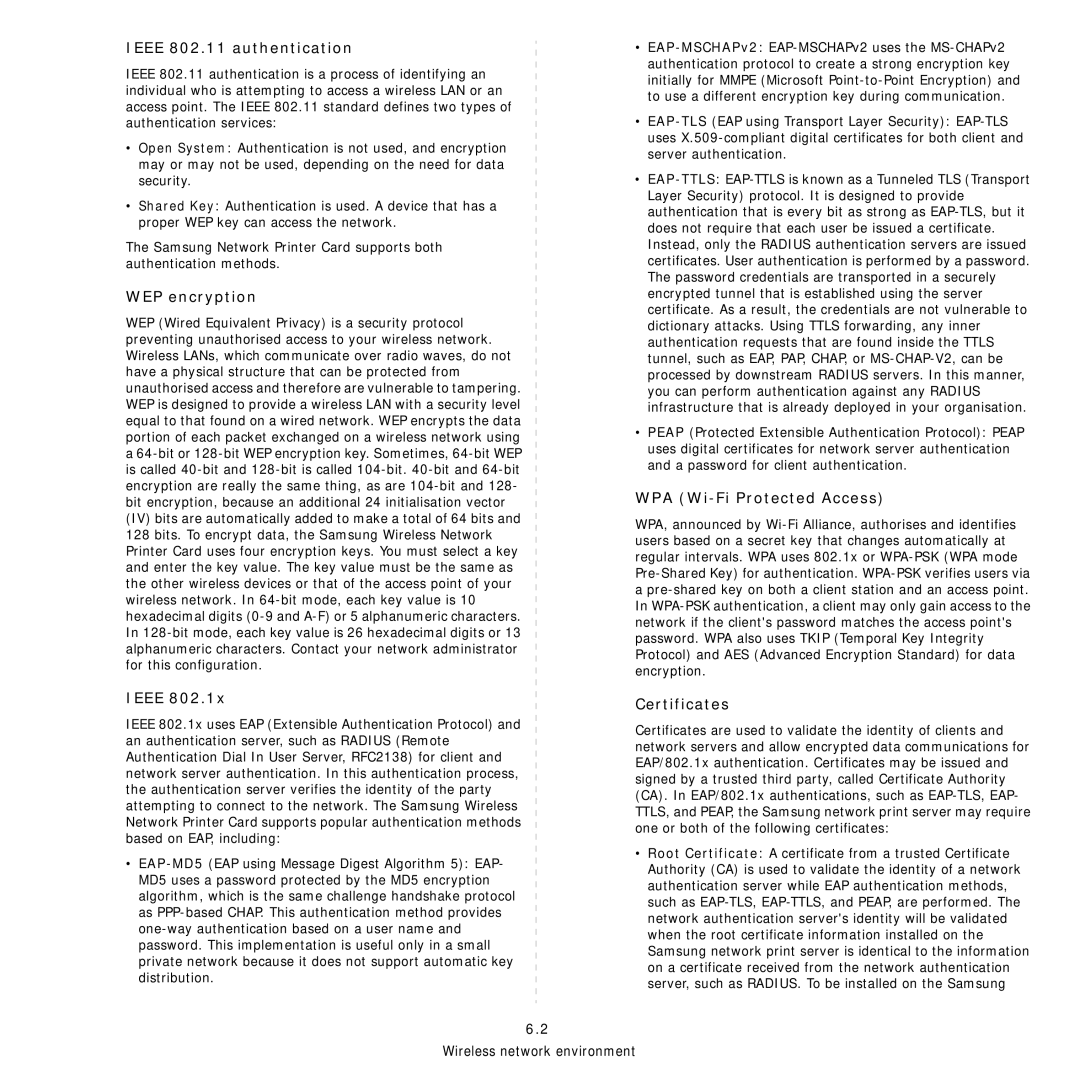IEEE 802.11 authentication
IEEE 802.11 authentication is a process of identifying an individual who is attempting to access a wireless LAN or an access point. The IEEE 802.11 standard defines two types of authentication services:
•Open System: Authentication is not used, and encryption may or may not be used, depending on the need for data security.
•Shared Key: Authentication is used. A device that has a proper WEP key can access the network.
The Samsung Network Printer Card supports both authentication methods.
WEP encryption
WEP (Wired Equivalent Privacy) is a security protocol preventing unauthorised access to your wireless network. Wireless LANs, which communicate over radio waves, do not have a physical structure that can be protected from unauthorised access and therefore are vulnerable to tampering. WEP is designed to provide a wireless LAN with a security level equal to that found on a wired network. WEP encrypts the data portion of each packet exchanged on a wireless network using a
•
•
•
•PEAP (Protected Extensible Authentication Protocol): PEAP uses digital certificates for network server authentication and a password for client authentication.
WPA (Wi-Fi Protected Access)
WPA, announced by
IEEE 802.1x
IEEE 802.1x uses EAP (Extensible Authentication Protocol) and an authentication server, such as RADIUS (Remote Authentication Dial In User Server, RFC2138) for client and network server authentication. In this authentication process, the authentication server verifies the identity of the party attempting to connect to the network. The Samsung Wireless Network Printer Card supports popular authentication methods based on EAP, including:
•
Certificates
Certificates are used to validate the identity of clients and network servers and allow encrypted data communications for EAP/802.1x authentication. Certificates may be issued and signed by a trusted third party, called Certificate Authority (CA). In EAP/802.1x authentications, such as
•Root Certificate: A certificate from a trusted Certificate Authority (CA) is used to validate the identity of a network authentication server while EAP authentication methods, such as
6.2
Wireless network environment
